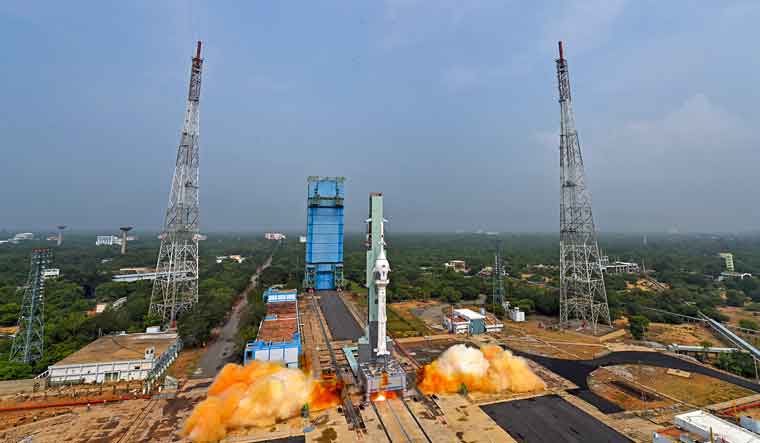As ISRO gets ready for the second test flight for its ambitious Gaganyaan mission it will be the first integrated air-drop test of the Gaganyaan Crew Module. Currently ISRO has not officially yet confirmed whether this test has been completed or not. This air-drop test is vital for validating the functionality of the parachute system and the structural integrity of the capsule, both of which are essential for ensuring the astronauts' safe re-entry and landing from space.
“The test involves attaching the crew capsule, constructed from robust materials like aluminum and steel, beneath a Chinook helicopter. It is then released over the ocean from an altitude of about 3.5 to 4 kilometers. This test is designed to confirm several crucial safety aspects,” explained space expert Girish Linganna.
This test flight will exhibit multiple aspects such as the Parachute Deployment wherein it will ealuate whether the parachutes deploys correctly and at the right moment after the capsule is released from a significant height. It will also test material durability as it will test the structural integrity of the crew capsule, made of aluminum and steel, to ensure it can endure the forces encountered during the drop and upon water impact.
Linganna explains that it will also exhibit descent control. “It will assess how effectively the parachutes manage and stabilize the descent of the capsule, ensuring it does not spin or tumble, which could pose risks. Besides that it will also display splashdown handling wherein it will verify the capsule’s ability to handle the impact with the water, ensuring it remains intact and safe for any crew inside. This test will also test tension handling and check the parachutes and their attachments for their capacity to manage the tension and stress during deployment and the slowing down of the capsule,” added Linganna.
Successful completion of this test is critical for moving forward with the Gaganyaan mission. Achieving success in the Gaganyaan mission will position India among a select group of nations with active human spaceflight programs, such as the US, Russia, and China. The development of several critical technologies is involved, including a human-rated launch vehicle, a life support system to provide an Earth-like environment in space, crew emergency escape provisions, and comprehensive strategies for the training, recovery, and rehabilitation of the crew.
Prime Minister Narendra Modi has already announced the selection of four astronauts for the mission, all test pilots from the Indian Air Force: Group Captain Prashanth Balakrishnan, Group Captain Ajith Krishnan, Group Captain Angad Pratap, and Wing Commander Shubhanshu Shukla.
Interestingly when compared to NASA and ESA, ISRO's Gaganyaan mission stands out for its focus on indigenous technology. While NASA's Artemis program aims to return humans to the Moon and ESA contributes to international collaborations like the International Space Station, Gaganyaan is primarily a demonstration of India's self-reliant capabilities in human spaceflight.
When compared to NASA and ESA, ISRO's Gaganyaan mission stands out for its focus on indigenous technology. While NASA's Artemis program aims to return humans to the Moon and ESA contributes to international collaborations like the International Space Station, Gaganyaan is primarily a demonstration of India's self-reliant capabilities in human spaceflight.
“NASA's missions often involve sophisticated technology and international partnerships, leveraging decades of experience in human space exploration. ESA, on the other hand, has been a key player in developing and operating some of the most advanced space technologies and exploratory missions. Gaganyaan's second test flight showcases India's progress in critical technologies such as the human-rated LVM3 launch vehicle and the crew escape system, which are essential for the safety and success of future manned missions. These developments are crucial steps for ISRO as it seeks to establish itself as a leader in space exploration,” remarked Srimathy Kesan, founder and CEO of Space Kidz India, which is into design, fabrication and launch of small satellites, spacecraft and ground systems.



